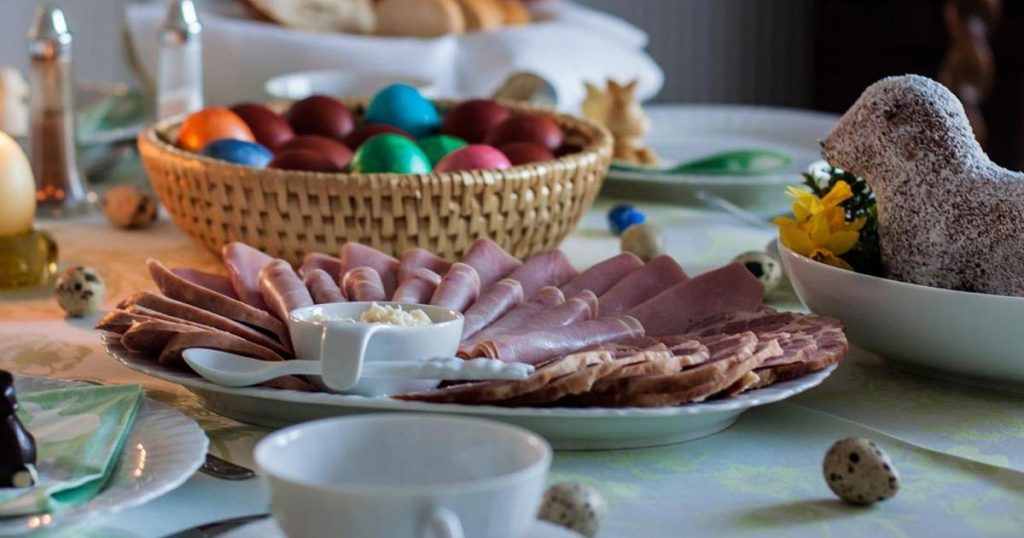Italians spent over 2 billion euros this year on Easter meals, with 86% choosing to celebrate at home or with relatives and friends. According to Coldiretti/Ixe’, 9% opted to dine out at a restaurant or agriturismo, while 3% chose a picnic outdoors. On average, there were six people at each table, and it took approximately 2.1 hours to prepare the Easter meal. The most representative Easter food for the majority of Italians is lamb, served at one out of every three tables in homes, restaurants, and agriturismos. Despite this, the traditional colomba cake surpassed chocolate eggs in popularity. Over 40% of families prepared Easter sweets at home this year, highlighting a return to regional recipes.
Traditional recipes from various regions across Italy were prevalent in Easter celebrations. From Piemonte’s stringy gnocchi to Toscana’s chicken broth soup and rabbit ragù pappardelle, each area boasted its own unique culinary traditions. Lazio featured the corallina sausage alongside cheese pizza for breakfast, while Romagna favored passatelli and Molise served a festive salad called “buona Pasqua” with green beans, hard-boiled eggs, and tomatoes. In Puglia, the Cutturiddu – lamb cooked in broth with Murgia’s typical herbs – reigned as the Easter table mainstay. Veneto showcased vovi e sparasi, hard-boiled eggs decorated with field herbs, and Trentino served Easter meatballs made with ground lamb.
Despite the elaborate Easter meals prepared by many Italians, Coldiretti expressed concern over the impact of the current crisis on food prices and international tensions. According to the organization, 3.1 million Italians needed assistance to afford meals during the holiday season. This highlighted the economic challenges faced by some families in Italy, despite the widespread culinary traditions and celebrations. The data provided by Coldiretti shed light on the significance of Easter in Italian culture, emphasizing the importance of family gatherings and regional food customs in the country.
The Easter holiday continues to hold a special place in Italian households, with families coming together to enjoy traditional meals and desserts. Despite the challenges posed by economic difficulties and international tensions, Italians showed resilience in preserving their culinary heritage during the festive season. The variety of regional dishes showcased the country’s diverse gastronomic traditions, from north to south, giving a glimpse into the rich tapestry of Italian cuisine. While some families faced hardships during the holiday season, the spirit of Easter celebrations and the sharing of meals remained an integral part of Italian culture. Through these traditions, Italians reaffirmed their ties to family, community, and culinary heritage, creating lasting memories and connections during the Easter holiday.


